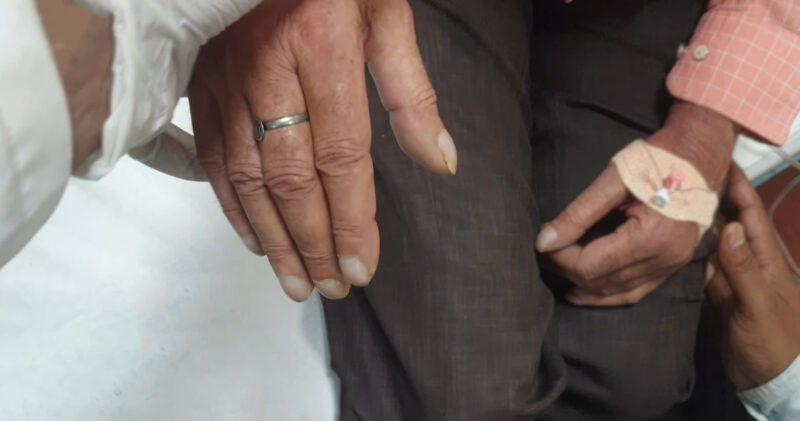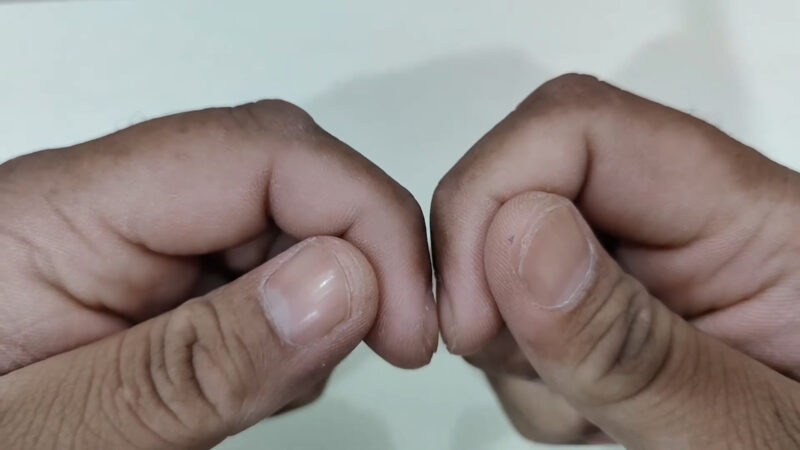Causes of finger clubbing is painless soft-tissue swelling of the terminal phalanges. The enlargement increases the convexity of the nail. It may be produced by growth factors from megakaryocytes and platelets lodged in nail bed capillaries stimulating vascular connective tissue.
It is an important sign of major diseases, although it may be congenital. It usually takes weeks or months to develop and may disappear if the underlying condition is cured. it usually affects the fingers symmetrically but may involve the toes. Unilateral clubbing can be caused by proximal vascular conditions, e.g. arteriovenous shunts for dialysis.
Autoimmune hyperthyroidism may be associated with thyroid acropachy – clubbing which is more pronounced on the radial side of the hand.
On another topic – Did you know that getting a cheat sheet from the IV Fluid calculation can not only help the nurses but be essential in efficiency and time management.
Finger clubbing is present if:
- The interphalangeal depth ratio (B/A in Fig. 3.18) is >1
- The nail bed angle is >190°
- Schamroth’s window sign is absent. Increased nail bed fluctuation may be present, but its presence is subjective and less discriminatory than the above features.
Causes
Causes of Clubbing are include:
Acquired Causes
- Thoracic (~70%)
- Lung cancer
- Chronic suppurative conditions
- Bronchiectasis
- Lung abscess
- Empyema
- Cystic fibrosis
- Mesothelioma
- Fibroma
- Pulmonary fibrosis
Cardiovascular Causes
- Cyanotic congenital heart disease
- Infective endocarditis
- Arteriovenous shunts and aneurysms

Gastrointestinal Causes
- Cirrhosis
- Inflammatory bowel disease
- Coeliac disease
Others Causes
- Thyrotoxicosis (thyroid acropatchy)
Cancers related to digital clubbing
- Esophageal cancer
- Gastrointestinal tumors
- Liver cancer
- Lung cancer
- Lymphoma
- Mesothelioma: A rare cancer that asbestos exposure causes
Who can get clubbed fingers?
Digital clubbing can happen to anyone. In most cases, it’s a symptom of another condition, but it can be idiopathic. Idiopathic means that there’s no cause. Digital clubbing can also be congenital (something you’re born with) or hereditary.
Clubbing often indicates problems with your lungs, heart or digestive system. Clubbing usually happens because of long-lasting (chronic) low levels of oxygen in your blood, known as hypoxemia.
@dermdoctor Go check with your doctor! @naoakiito #dermdoctor #nailclubbing ♬ original sound – DermDoctor | Dr. Shah
Can I reduce my risk of developing clubbed fingers?
You can’t prevent being born with clubbed fingers or toes. You may be able to reduce your risk of developing diseases that may lead to digital clubbing.
For instance, you may reduce your chances of getting certain lung and heart diseases by not smoking. You may reduce your chances of developing cirrhosis by not drinking alcohol to excess.
Conclusion
Causes of finger clubbing don’t hurt. It can develop over weeks or months and may get better if the underlying problem is treated. It usually affects both hands the same way, but it can also happen on one side because of problems with the blood vessels.
Doctors can check for specific signs to diagnose finger clubbing, like the depth of the joints, the angle of the nails, and a certain sign called Schamroth’s window. Major causes include lung diseases (like lung cancer and chronic lung conditions), heart problems (like congenital heart defects and endocarditis), and digestive disorders (like cirrhosis and inflammatory bowel disease).
Finding and treating the finger clubbing is important for early diagnosis and better health.

